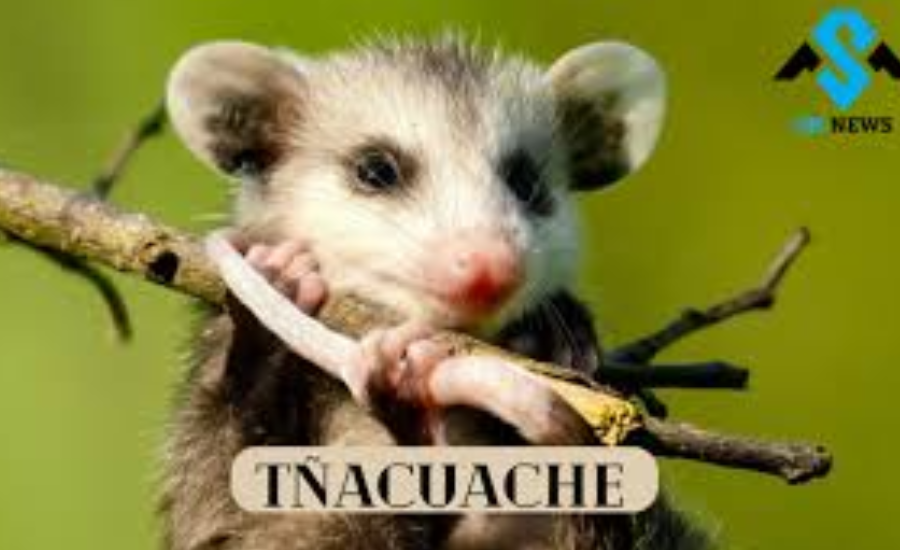Introduction to the Tñacuache
The tñacuache, often referred to as the opossum, is an intriguing marsupial native to the Americas. As a member of the Didelphidae family, which includes over a hundred species, the tñacuache has fascinated people across cultures for centuries. Celebrated for its nocturnal habits, distinctive appearance, and vital ecological roles, this article aims to explore the diverse aspects of the tñacuache. We will delve into its biology, behavior, cultural significance, and environmental contributions, providing a comprehensive understanding of this often-misunderstood creature.
What Exactly is a Tñacuache?
The tñacuache, scientifically known as Didelphis virginiana, belongs to the marsupial family, which also includes kangaroos and koalas. Unlike placental mammals that nurture their young in the womb, marsupials like the tñacuache give birth to underdeveloped young that continue to develop in a pouch. This unique reproductive strategy highlights the tñacuache’s remarkable adaptability, allowing it to thrive in diverse habitats, from lush forests to bustling urban landscapes.

The Distinctive Characteristics of the Tñacuache
The tñacuache’s physical characteristics are striking and easily recognizable. With a white face, large dark eyes, and coarse gray fur, it possesses an almost ghostly visage. Its prehensile tail is particularly remarkable; it not only aids in climbing but also serves as an extra limb for balance and grasping objects. One of the tñacuache’s most fascinating behaviors is its ability to “play dead” as a defense mechanism, a topic we’ll explore in more detail later.
Habitat and Distribution of the Tñacuache
Tñacuaches are adaptable creatures found in a variety of habitats, ranging from dense forests to crowded urban centers. Their flexibility allows them to thrive in tropical forests, mangroves, and even suburban areas close to human habitation. Often spotted rummaging through gardens, parks, or trash cans, these nocturnal mammals are most active at night, using trees, shrubs, and burrows for shelter. Their ability to coexist with humans further underscores the tñacuache’s resilience and adaptability.
Diet and Feeding Habits of the Tñacuache
The tñacuache is an omnivore, consuming a wide array of food that includes fruits, insects, small vertebrates, and carrion. This varied diet not only highlights its adaptability but also plays a crucial role in maintaining ecological balance. With keen senses, particularly a strong sense of smell, tñacuaches excel at foraging for food. Their scavenging behavior helps control pest populations and contributes to the health of their ecosystems.
The Ecological Impact of the Tñacuache
Tñacuaches are vital participants in nutrient cycling due to their habit of consuming carrion. By breaking down decaying organic matter, they return essential nutrients to the soil, promoting soil health and enhancing ecosystem stability. This recycling process is crucial for maintaining the integrity of their habitats, demonstrating how the tñacuache contributes to overall environmental health.
The Behavior of the Tñacuache: Myths and Realities
Despite their ecological importance, tñacuaches are often misunderstood. Many myths surround this marsupial, with some people viewing it as a pest or an ill omen. However, the reality is that the tñacuache plays a beneficial role in controlling insect and rodent populations, thereby supporting the health of ecosystems. Understanding these truths is essential for fostering appreciation and respect for the tñacuache.
Protective Mechanisms of the Tñacuache
One of the most famous survival strategies of the tñacuache is its ability to “play dead,” known scientifically as thanatosis. When threatened, the tñacuache can collapse, become rigid, and emit a foul odor, mimicking death. This instinctive behavior often deters predators, who are disinterested in consuming what they believe to be a deceased animal. This unique adaptation not only ensures the tñacuache’s survival but also highlights its evolutionary ingenuity.
The Life Cycle of the Tñacuache: From Birth to Maturity
The reproductive cycle of the tñacuache is a captivating process. Female tñacuaches experience a brief gestation period of 12 to 14 days, after which they give birth to a litter of small, underdeveloped young. These newborns instinctively crawl into their mother’s pouch, where they continue to grow and develop for several weeks. As they mature, the young tñacuaches gradually venture out of the pouch and begin to ride on their mother’s back, learning essential survival skills. By the time they reach four to five months of age, they become independent and start establishing their own territories.

The Tñacuache in Culture and Folklore
Cultural Significance and Mythology
The tñacuache holds a significant place in various cultural narratives, especially in Mexico and Central America. Often depicted in folklore and mythology, one notable legend portrays the tñacuache as a cunning trickster that stole fire from the gods by hiding a glowing coal in its tail. This tale explains why the tñacuache’s tail appears scorched, symbolizing its cleverness and resourcefulness.
Symbolism and Modern Representation
Symbolically, the tñacuache represents resilience and adaptability, embodying themes of survival and renewal. In contemporary culture, the tñacuache remains a popular subject in films, cartoons, and literature, frequently portrayed as an intelligent and resourceful character. This modern representation has helped foster a greater appreciation for the tñacuache, highlighting its unique role in both nature and culture.
Embracing the Tñacuache
The tñacuache is a remarkable marsupial that plays a crucial role in its ecosystem while carrying rich cultural significance. By understanding and appreciating the tñacuache, we can foster a deeper respect for wildlife and the delicate balance of our natural world. This resilient creature, with its unique adaptations and ecological contributions, reminds us of the intricate connections within our environment.
Frequently Asked Questions (FAQs) about the Tñacuache
Q: What is a tñacuache?
A: The tñacuache, or opossum (Didelphis virginiana), is a marsupial native to the Americas. It is characterized by its nocturnal behavior, distinctive physical traits, and adaptability to various environments.
Q: Where do tñacuaches live?
A: Tñacuaches are highly adaptable and can be found in a range of habitats, including tropical forests, mangroves, and urban areas. They are commonly seen in gardens and parks, particularly in regions close to human habitation.
Q: What do tñacuaches eat?
A: Tñacuaches are omnivorous, consuming a diverse diet that includes fruits, insects, small vertebrates, and carrion. Their scavenging habits play an essential role in controlling pest populations and maintaining ecological balance.
Q: How do tñacuaches protect themselves from predators?
A: One of the most notable defensive strategies of the tñacuache is its ability to “play dead,” or thanatosis. When threatened, it can collapse, become rigid, and emit a foul odor, mimicking death to deter predators.
Q: What cultural significance do tñacuaches hold?
A: In various cultures, especially in Mexico and Central America, the tñacuache is featured in folklore as a trickster figure. It symbolizes resilience and adaptability, reflecting themes of survival and resourcefulness in both traditional stories and modern representations.
Q: How do tñacuaches reproduce?
A: Female tñacuaches have a short gestation period of 12 to 14 days, giving birth to small, underdeveloped young that crawl into their pouch for continued development. The young gradually venture out and learn survival skills before becoming independent at around four to five months of age.
Conclusion
The tñacuache is a remarkable marsupial that plays a vital role in its ecosystem and carries rich cultural significance across various narratives. Its adaptability to diverse habitats, unique dietary habits, and fascinating behaviors, such as playing dead, showcase its resilience. Furthermore, the tñacuache’s presence in folklore highlights its symbolic importance as a representation of cleverness and survival. By understanding and appreciating the tñacuache, we can cultivate a deeper respect for wildlife and the intricate balance of our natural world, recognizing the essential contributions of this often-misunderstood creature.
Read Next: mu88-elysii





